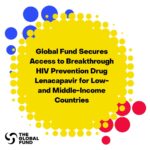By Aghan Daniel
Preparations for the 4th African Conference of Science Journalists to be held from November 16 to 19, 2020 in Kisumu, Kenya are on high gear. The event is being organised by the Media for Environment, Science, Health and Agriculture (MESHA).
“We are making very good progress with a target of hosting 300 delegates from about 30 countries in Africa and from other parts of the world to the bi-annual event,” said Ms Violet Otindo, Chairperson of MESHA.
Registration for the Conference will open on June 30, 2020 and the Conference registration fee has been put at $500 per delegate with students paying $120. Government officials will be charged $220 with university lecturers paying $200. Those sponsoring speakers to pay for them $325 for them to also participate in the Conference. More information about the Conference will be available from March 1 on MESHA website www.meshascience.org.
According the Local Organising Committee, organisations have opportunities to sponsor participants, organise workshops, make presentations, or organise field trips at the event to get in touch with the Conference Director at info@meshascience.org or meshascience@gmail.com for further details on partnerships. A few pre-conference field visits will be conducted in June.
The first two days of the Conference will be dedicated to field visits. Technical presentations will be made on day three with training for scientists and journalists being done on the last day of the event.
In a nutshell, the program will look like this; Nov 15 – Arrival; Nov 16 and 17 – Field trips; Nov 18 – Technical presentations; Nov 19 – Skill building (training scientists and journalists on how to relate with each other etc). The theme for the conference is Gender and delivery of science in Africa.
But why Kisumu? Kisumu is a beautiful lakeside city located at a hub of the western Kenya tourism circuit. The city is barley four hours drive to the source of River Nile which is cheaply accessible by bus at a cost that does not surpass $20. An hour drive away is the beautiful Kakamega Forest. Time, they say, has stood still for the Kakamega Forest, a remnant of the rain forest that stretched all across Central Africa. This beautiful forest is home to various mammals and, bird watching, hiking and rock climbing can be enjoyed here in the serenity of the forest that time forgot.
On your way to Kakamega, are the mysterious Crying Stones of Illesi. It is an important landmark on the near the road to Kisumu barely 45 minutes away. The rock formation resembles a solemn head falling on weary shoulders.
To the south lies the mystical Lake Simbi Nyaima. Located close to Kendu Bay town, Lake Simbi is a tiny Crater Lake measuring about one kilometres in radius. It is a mere one hour drive from Kisumu.
That all these and many more happen around Kisumu City is amazing. MESHA is already in touch with some tour agents who can undertake a day’s visit to the various touristic locations.
Those who love birds even more, should be ready to spare two hours’ drive to the Great Rift Valley on the east side of Kisumu, to witness the spectacular ornithologist’s paradise that is Lake Nakuru National Park. Stories of various research projects being done in western Kenya are amazing.
Kisumu is home to multitudes of research on HIV. The area boasts of the large Lake Victoria Basin currently home to over 50 projects on climate change and environment. Dairy farming and three large irrigation schemes make Kisumu the perfect venue for this conference.
Farming is the most important economic sector in Kenya, although less than 8 percent of the land is used for crop and feed production, and less than 20 percent is suitable for cultivation.
Kenya is a leading producer of tea and coffee, as well as the third-leading exporter of fresh produce, such as cabbages, onions and mangoes. Small farms grow most of the corn and also produce potatoes, bananas, beans and peas. Kisumu is also known for its fisheries, a sector that is full of stories for journalists from far and wide.






